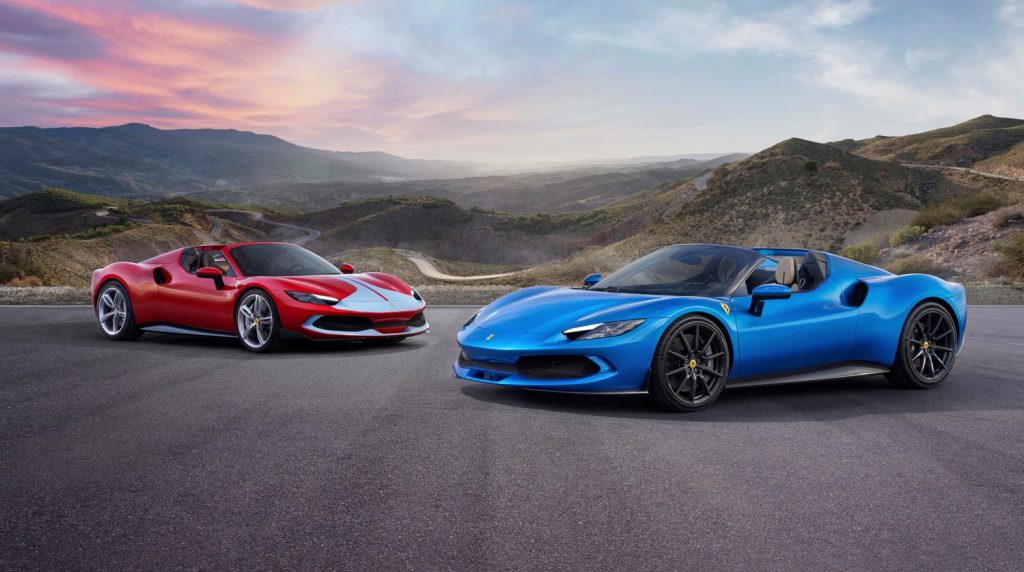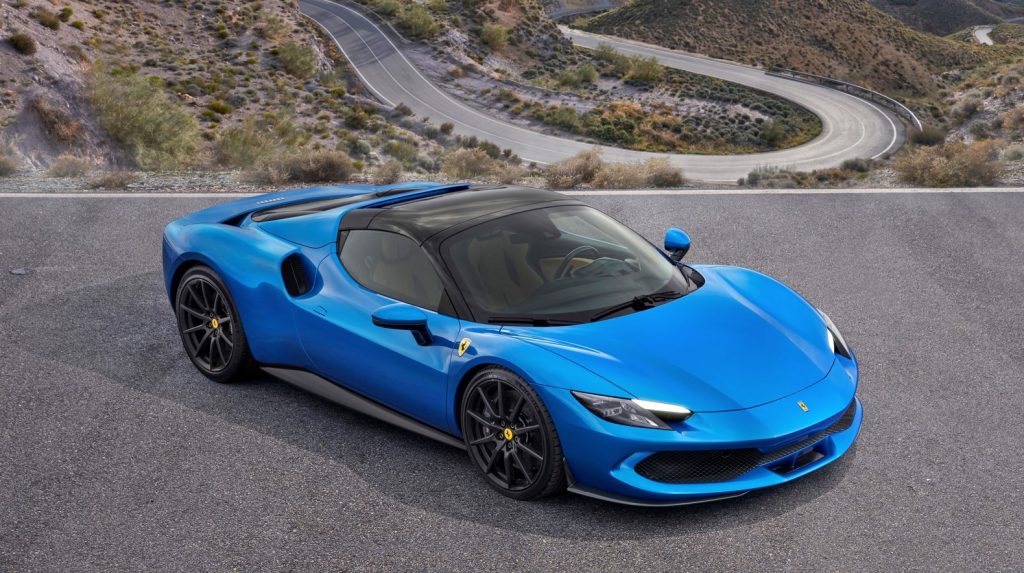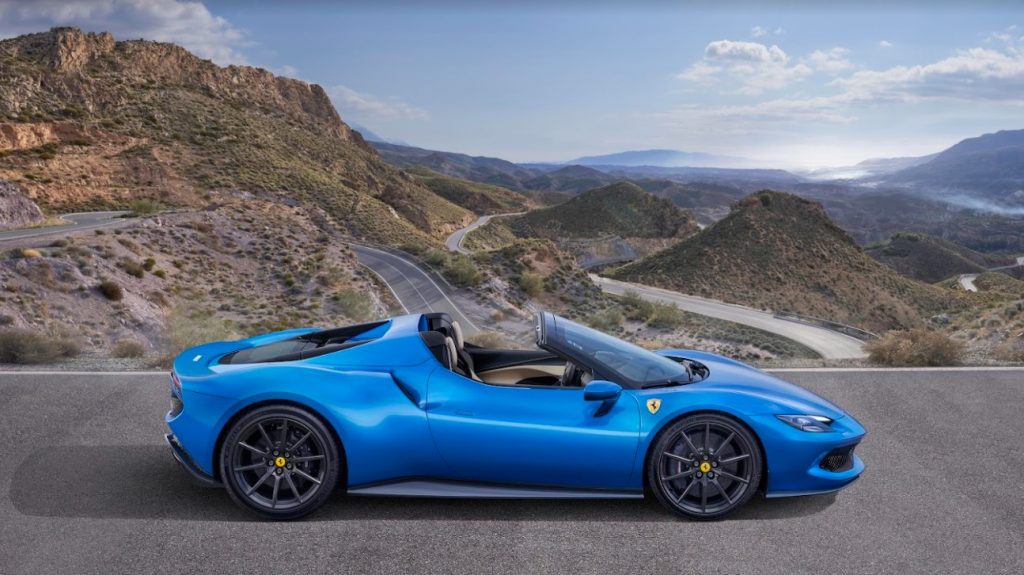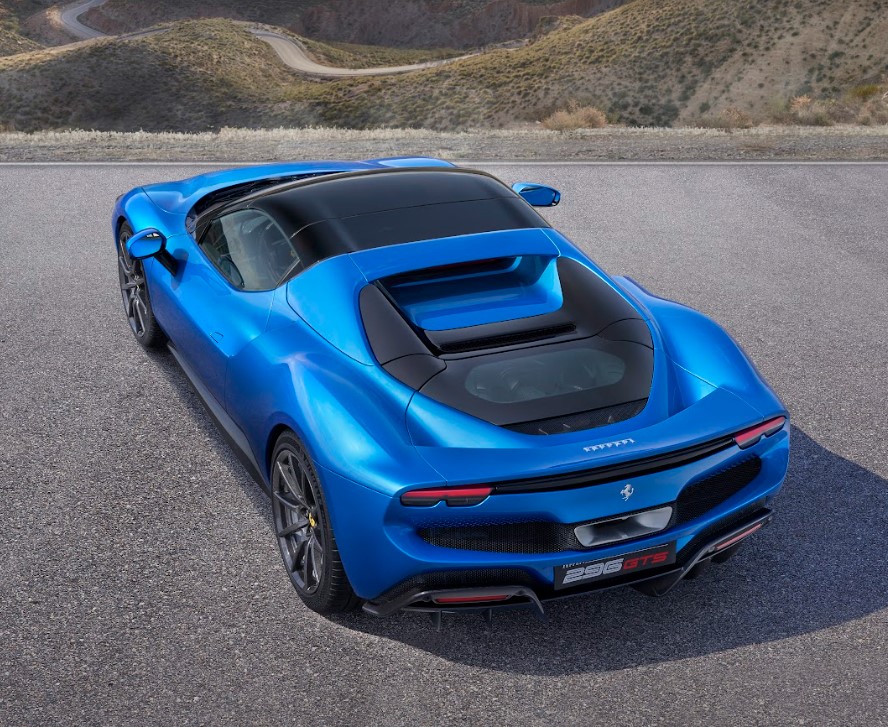Ferrari 296 GTS, new rear-engined plug-in hybrid

Ferrari have recently brought the Ferrari 296 GTB to Malaysia under their official importer and distributor, Naza Italia. It was the first Ferrari to ever carry an electric motor, which made it a must buy for Ferrari enthusiasts out there. Now, Ferrari have just revealed the Ferrari 296 GTS, their new mid rear-engined Berlinetta spider.

Taking after the 296 GTB, the new plug-in hybrid from Ferrari features the same 830 cv Ferrari V6 hybrid powertrain under its bonnet. It will also be available with additional customizations like the Assetto Fiorano package which was also offered alongside the GTB.

The Ferrari 296 GTS also features an aerodynamic design. Ferrari says the 296 GTS performs equally as well as the 296 GTB in terms of aerodynamics.

More detailed information on the vehicle dynamics and styling of the vehicle is available in the press release below.
PRESS RELEASE
VEHICLE DYNAMICS
The 296 GTS’s dynamic development focused around boosting the car’s pure performance, delivering class-leading levels of driver engagement making full use of the new architectural solutions (V6, hybrid powertrain, shorter wheelbase) as well as improving the usability and accessibility, not just of the car’s performance, but also the functionalities afforded by the hybrid layout.
The targets were achieved by honing the architecture and keeping all the main vehicle components as compact as possible, as well as managing energy flows and their integration with the car’s vehicle dynamic controls. Specific components were also developed, not least the Transition Manager Actuator (TMA) and the 6-way Chassis Dynamic Sensor (6w-CDS) – a world first for the automotive sector. There are also new functions, such as the ABS EVO controller, which uses the data gathered by the 6w-CDS, and the grip estimation integrated with the EPS.
In Ferrari, the way the car handles and provides feedback to the driver (what internally is referred to as the fun to drive factor) is measured by five different indicators:
- Lateral: response to steering wheel inputs, the prompt reaction of the rear axle to steering inputs, effortless handling
- Longitudinal: rapidity and smoothness of the accelerator pedal’s response
- Gear shifting: shifting times, sensation of coherent progression through the gears with every gear change
- Braking: brake pedal feel in terms of travel and response (efficiency and modular travel)
- Sound: level and quality in cabin and progression of engine sound as revs rise.

How easily accessible and usable the performance is is also of significant importance when driving the 296 GTS: for instance, in electric-only eDrive mode, the car can reach speeds of up to 135 km/h without resorting to the ICE. In Hybrid mode, on the other hand, the ICE backs up the electric motor when higher performance is required. The transition between electric and hybrid driving modes is managed very fluidly to guarantee smooth, constant acceleration and to make the power of the powertrain available as rapidly as possible. Stopping distances in the dry have been significantly shortened by the ABS EVO and its integration with the 6w-CDS sensor, which also ensures more consistent braking force under repeated heavy braking.
From a chassis perspective, at 2,600mm, the wheelbase is 50 mm shorter than previous Ferrari mid-rear-engined berlinettas to the benefit of the car’s dynamic agility. Other solutions that enhance the car’s handling and performance include the brake-by-wire system, the ‘Aero’ brake callipers, electric power steering, the rear active aero device and SCM-Frs magnetorheological dampers.
The 296 GTB’s chassis was redesigned and optimised for the 296 GTS to improve torsional rigidity and bending stiffness compared to previous spider applications. This was achieved to the tune of 50% in the case of the former and 8% in the case of the latter. The main areas involved were the A-pillar, B-pillar and sills.

Meticulous attention was paid to reducing weight to ensure the car’s balance and delicacy of handling: adding the weight of the hybrid system was offset by a number of different solutions, including the new V6, which weighs 30 kg less than the V8 unit used on previous berlinettas, and the extensive use of lightweight materials. The result is a dry weight of just 1540 kg which is class-leading in regards to the overall weight-to-power ratio: 1.86 kg/cv.
The 296 GTS has a single electric motor which drives the rear wheels only. The power delivery from the electric motor is available in hybrid and full-electric driving modes and is supplied according to the driver’s pressure on the accelerator pedal, managed by the hybrid power flow control and monitored by traction control.
With regard to the main charging functions, there is regenerative braking at the rear in normal braking conditions as well as when ABS intervenes, overbraking on the rear axle on lift-off and battery charging via combined management of the ICE and electric motor.
Aside from electric traction control and energy recovery thanks to the new brake-by-wire unit, which guarantees hydraulic and electric blending in all operating modes (including ABS), another traction control and distribution solution present on the 296 GTS is the ‘ABS Evo’ which premiered on the 296 GTB. Thanks to brake-by-wire, pedal travel is reduced to an absolute minimum, which boosts the feeling of sportiness without neglecting efficiency when braking lightly or the pedal travel feel when on the track. The ABS control module, which is integrated with the 6w-CDS sensor, allows the grip limits of the rear tyres to be pushed still further, making for greater repeatability of stopping distances and thus improving performance when turning into corners as it permits the driver to trail brake towards the apex.

Once again on the 296 GTS, a power management selector (eManettino) has been adopted alongside the traditional Manettino. The eManettino has four positions which can be selected from the steering wheel:
- eDrive: the internal combustion engine is off and there is pure electric drive to the rear wheels; with a fully-charged battery the car can cover 25 km at a maximum speed of 135 km/h
- Hybrid (H): this is the default mode on ignition. The power flows are managed for maximum efficiency and the control logic defines the intervention of the internal combustion engine. With the engine on, the car develops its maximum power and performance
- Performance: the ICE is always on and helps maintain the battery efficiency to ensure full power at all times. This is the ideal setting for press-on driving
- Qualify: provides maximum performance but at the cost of lower battery recharging.
The grip estimator in the electronic Side Slip Control (eSSC) system is flanked by a second device based on the electric power steering. By using the information from the EPS and cross-referencing it with the side slip angle estimated by the eSSC, it can estimate the grip of the tyres during every steering manoeuvre, including when the car is not being driven on the limit, in order to guarantee that the controllers intervene correctly based on grip conditions. When driving on the track, grip estimation is 35% faster than previous applications.
As was the case on the 296 GTB, the 296 GTS has an ABS control module developed exclusively for Ferrari and available from the ‘Race’ position upwards. It uses the information from the 6w-CDS to obtain a more precise estimation of speed and optimise braking distribution compared to the Yaw Rate Sensor used up until now. The 6w-CDS measures both the acceleration and the speed of rotation on three axes (X, Y, Z) enabling the other vehicle dynamic controls to more accurately read the car’s dynamic behaviour, thus optimising their intervention. This accuracy allows the longitudinal force of the tyres to be better exploited when braking in a straight line and on switchbacks, when the rear axle is subject to the natural compromise between braking performance and lateral stability. The result is a decisive improvement in braking distances: compared to the F8 Spider, the 296 GTS reduces the 200-0 km/h braking distance by 8.8% and also improves the repeat braking efficiency from that speed by 24%.
STYLING
EXTERIOR
The 296 GTS further emphasises the clean, sophisticated lines of the 296 GTB . When the top is down, it is the peerlessly elegant epitome of the open-air hybrid concept. Its unprecedented architecture for a spider, in fact, opens a whole new chapter in the marque’s story. The designers’ goal of retaining the 296 GTB’s main characteristics required a period of meticulous analysis of the dimensions of its technical components. There was, of course, a clear focus on minimising the impact of any modifications on the exterior bodywork and also on introducing a clear, instantly recognisable theme that would encapsulate the complexity of the design whilst translating it into accomplished linear forms.

The need to stow the RHT (Retractable Hard Top) inside the engine compartment inspired the Ferrari Styling Centre’s team under Flavio Manzoni to create a new tonneau cover design, the geometries of which have produced styling elements very different to Ferrari spiders of the recent past. While on the 296 GTB the engine bay is completely horizontal and dominated by two flying buttresses in a nod to the 250 Le Mans archetype, the 296 GTS’s tail is absolutely unique.
As is the case with the 296 GTB, dominant feature of the new car’s architecture is the signature ‘aero bridge’. The overall effect is of an extremely compact cabin effortlessly integrated with the wings and flanks. The buttress theme is further enhanced by contrasting sculpted extensions that frame the engine cover screen and integrate the novel fuel filler and battery charge covers, avoiding architectural disharmony.
COCKPIT
The 296 GTS’s cockpit was developed around the new concept of an entirely digital interface. This interior layout draws on the latter’s stylistic coherence for its forms. While with the SF90 Stradale the designers wanted to highlight the presence of the advanced technology and underscore a clear break with the past, in the case of the 296 GTS, the idea was to clothe that technology to sophisticated effect. The result is a pure, minimalistic connotation characterised by a powerful elegance that, on an aesthetic level, perfectly mirrors the design of the exterior.

The 296 GTS’s cabin raises the concept of the formal purity of the functional elements to new heights. From a formal perspective, when the engine is off, the onboard instruments go black, underscoring the minimalist look of the cabin. Exclusive Italian leather trim to the seats and trim is further enhanced by the noble technical materials used on the functional components. Aerodynamic flaps have been integrated into the rear trim structure to reduce buffetting and increase comfort in open-top driving.
The sculptural door panel is a seamless continuation of the dashboard in terms of both materials and colour. On the central medallion, the styling cue is a deep lozenge-shaped scoop, a three-dimensional element. This type of architecture makes the entire door panel look extremely light and integrates the theme that connects it to the rear trim. The tunnel incorporates the modern take on the classic gear-shift gate and a compartment for stowing the ignition key with its characteristic Prancing Horse badge. The tunnel has also been redesigned, so that rather than being open as on the 296 GTB, it has a closing oddments compartment, which further emphasises the continuity between mats and tunnel. For the 296 GTS, the designers created specific diapason-style seats using contrasting grooves which coordinate aesthetically with the edge strip of the instrument cluster.
ASSETTO FIORANO
For clients who want to exploit the car’s extreme power and performance to the utmost, the 296 GTS Assetto Fiorano package is available; it is completely uncompromising in terms of maximum performance, thanks to significant weight reduction and aero content. Most notably, these include special GT racing-derived adjustable Multimatic shock absorbers optimised for track use; high downforce carbon-fibre appendages on the front bumper that can deliver an additional 10 kg of downforce, a Lexan® rear screen, and more extensive use of lightweight materials such as carbon-fibre for both cabin and exterior.

The Assetto Fiorano package involves much more than simply replacing elements. Some components required that the standard basic structure be redesigned, including the door panel, resulting in an overall weight-saving of 8 kg. Lastly, a special livery inspired by the 250 Le Mans can also be ordered exclusively by owners who opt for the Assetto Fiorano package. Its design runs from the front wings and hugs the central grille and delineates its edges. This styling element continues along the bonnet, creating a hammer motif before running lengthways up to the RHT, tonneau cover and then down onto the rear spoiler. Other content available to order solely with the Assetto Fiorano package includes Michelin Pilot Sport Cup2R high performance tyres which are especially suited to track use because of their grip.





